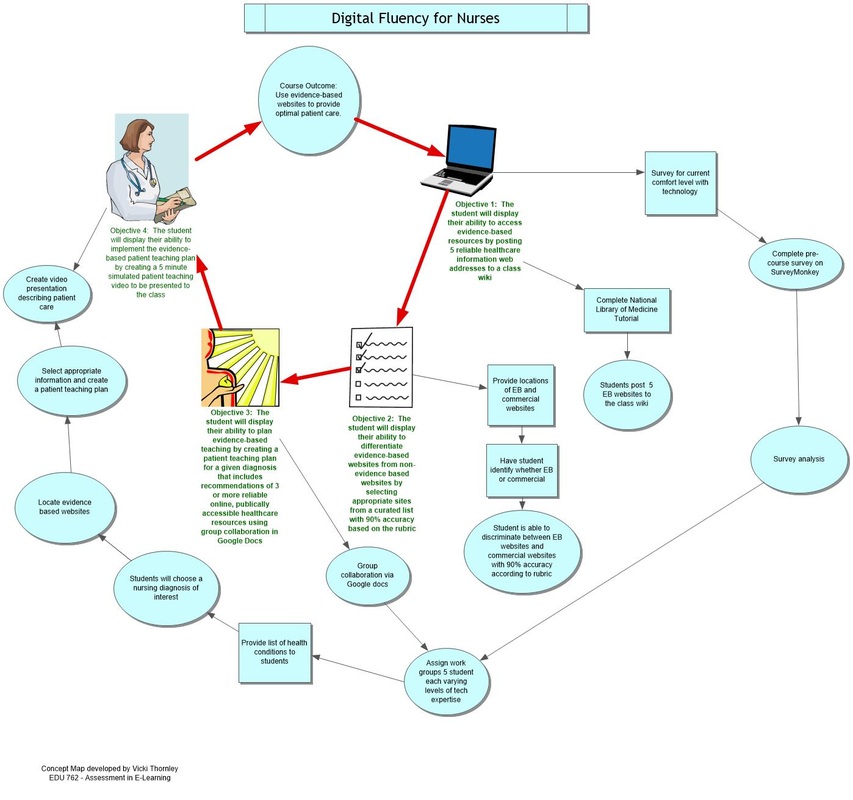Student Assessment: Using a Concept Map
Digital fluency, or the ability to locate and evaluate relevant information from internet resources, is critical in providing patient care. I developed a map to align the course learning objectives, activities and assessment tools in a visual format. This map was developed using a free version of Inspiration software.
I chose a combination of images and text boxes in the design of the map to add some interest to the map. Keeping with the concept of backward design (Wiggins & McTighe), the course outcome begins the map. The process returns to the course outcome as the student completes learning process and accomplishes the predicted outcome. A summative evaluation might then be created to measure learning. The four objectives are written at higher levels of Bloom's taxonomy and include assessment measures and use of a collaborative tool.
If you begin with the course outcome and follow to the right you will see the design for this module. For a larger view click on the map.
Wiggins, G. P., & McTighe, J. (2011). The understanding by design guide to creating high-quality units. Alexandria, Va.: ASCD.
I chose a combination of images and text boxes in the design of the map to add some interest to the map. Keeping with the concept of backward design (Wiggins & McTighe), the course outcome begins the map. The process returns to the course outcome as the student completes learning process and accomplishes the predicted outcome. A summative evaluation might then be created to measure learning. The four objectives are written at higher levels of Bloom's taxonomy and include assessment measures and use of a collaborative tool.
If you begin with the course outcome and follow to the right you will see the design for this module. For a larger view click on the map.
Wiggins, G. P., & McTighe, J. (2011). The understanding by design guide to creating high-quality units. Alexandria, Va.: ASCD.

